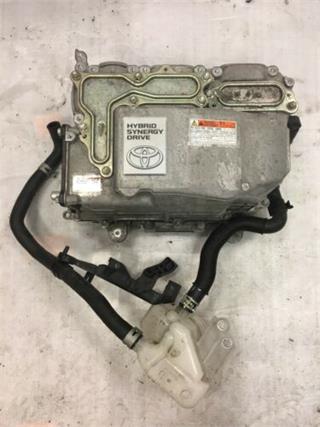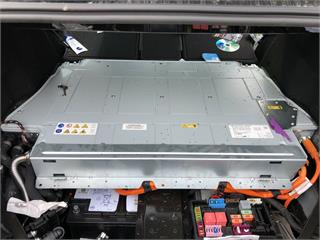Introducing my Polski Fiat 126p
Welcome to my first article on DIY EV Conversions. My chosen car is my Polski Fiat 126p from 1996.

Why a Fiat 126?
For my first conversion, I want to use a simple car and they don't come much simpler than this (also, I just happened to own one which also helps ;-) ). Here is a list of the "non-features" of this car which make conversion easier:
- Small and light (currently approx 680kg) => smaller, cheaper motor and batteris
- No power steering
- No air conditioning
- No complicated electronics
- It's already so slow, that it will not require a powerful motor to match or beat the original performance
Chosen Motor, Controller and Batteries
Since I am planning to keep this build as low cost (and marriage-friendly) as possible, I opted to use salvaged car parts.
Motor
I've chosen to use the rear motor unit from a Lexus RX450h hybrid SUV. I decided to bin the original motor and gearbox as changing gear is not really necessary in an EV. I also figured that the more mechanical stuff I throw away from the original car, the more reliable it will be! This Lexus motor has a peak output of 50kW vs 18kW for the original 650cc air-cooled engine, so I hope to achieve a much more "modern" performance level. The unit includes a fixed speed reduction and differential.

Benefits:
- More than enough power and torque for my needs
- Can be bought used for very little money. In the designated vehicle, this motor is very carefully controlled and monitored to avoid overheating and over-stressing. BDLC motors have an extremely long lifespan if looked after. The fixed speed reduction and differential require only oil to keep maintained. These units should almost never require replacement during the life of the vehicle, meaning that their used value is very low, due to limited demand!
Downsides:
- The motor produces peak power at around 650 volts. Any off the shelf inverter/controller unit handling this voltage will be expensive. I have learned that this motor can run on lower voltages of around 400 - 450v quite happily.
- The motor is not water-cooled, so at the moment I'm not sure what the continuous power output will be. I'm happy to find this out by trial and error. People have suggested running the oil in the unit through a cooler/heat exchanger as a means of cooling, so I will investigate that if and when necessary.
Cost: £200 (ebay)
Controller
I took the plunge and bought the motor without figuring out what I would do for a controller. Fortunately, thanks to the work of Damien Maguire open source control boards are now available for Toyota Prius (and related hybrids) controller/inverters. I settled on a Toyota Yaris controller (which is almost identical to the Prius gen 3). In addition to this, I purchased the Prius Gen 3 Inverter Logic Board from EvBmw (run by Damien Maguire).

Cost: £100 (Yaris inverter)
£320 (Prius Gen 3 Inverter Logic Board)
Battery
Currently this car is used for almost nothing as it is, smelly (petrol) and unreliable (one replacement ICE engine to date). After conversion, I plan to use it for trips to Tesco, doing the school/nursery run, miscellaneous other trips to and from town (less than 10 miles per day on average). I'm estimating that around 10kWh of useable capacity should be more than enough for my needs.
A popular choice for EV conversions are Tesla modules out of a Model S (around 22 v and 5.5 kWh). Unfortunately, these are expensive (> £1000 in the UK), and quite low voltage, meaning I would need a lot of them for my motor (actually more than the Model S uses which would be far more capacity than I want or need). Another option is the modules from a Nissan Leaf (7.4 v and ~0.5 kWh) again this means I would need too many to get to my target voltage.
Because of my relatively low capacity needs and also wanting to have some decent performance, that meant getting a battery which can deliver a high power output from a small capacity. This and the fact that Tesla modules are expensive and too low in voltage steered me toward using a battery from a plug-in hybrid. These batteries don't have as good energy density as Tesla modules (which are class-leading) but they do have high power output and also typically use pouch or prismatic cells which are easier to re-arrange. After keeping an eye on good ol' ebay for a month or two, I found a battery from a salvaged Mercedes C 350 Hybrid Sport. I will do a full teardown analysis of this battery in due course.

Capacity: 6.38 kWh/22Ah Voltage: 290 V. This is less than the 650 V maximum used by the Lexus motor, but it will be enough to get the car running (with a limit on top speed). I plan to buy a second one of these batteries when I find one at the right price!
Cost: £487.50 (about £78 per kWh)
Thanks for reading and stay tuned for the next instalment!
